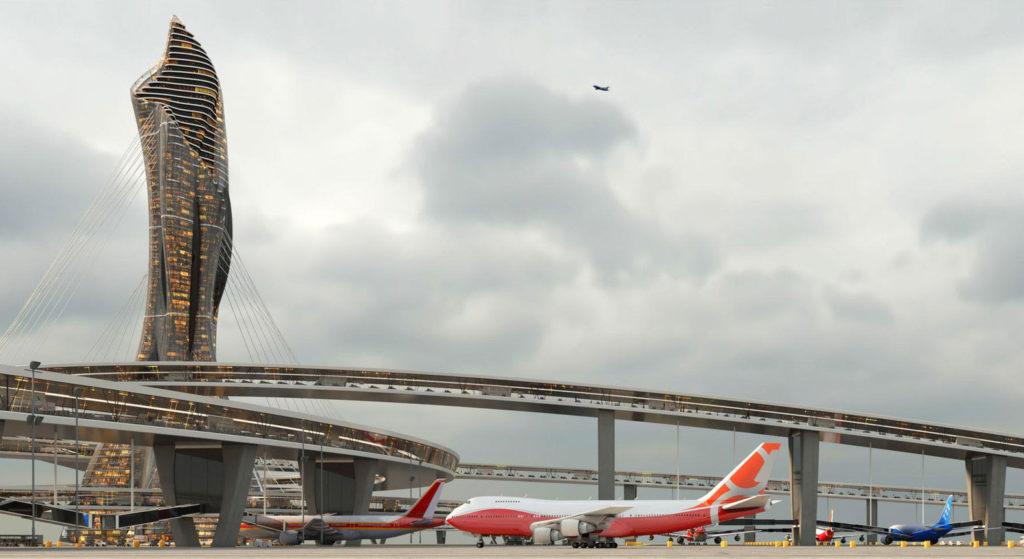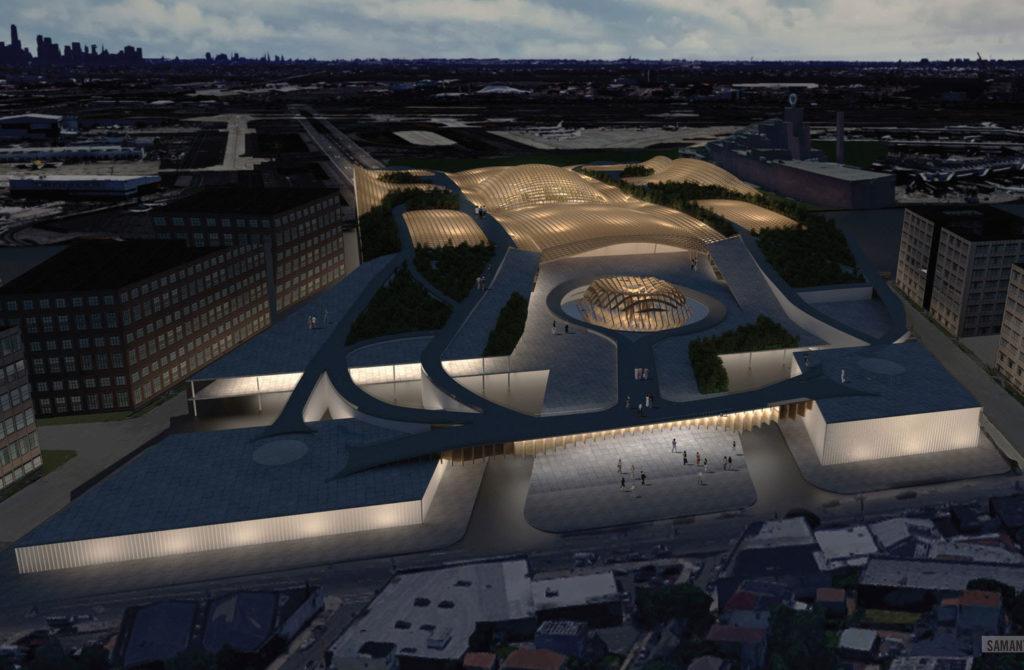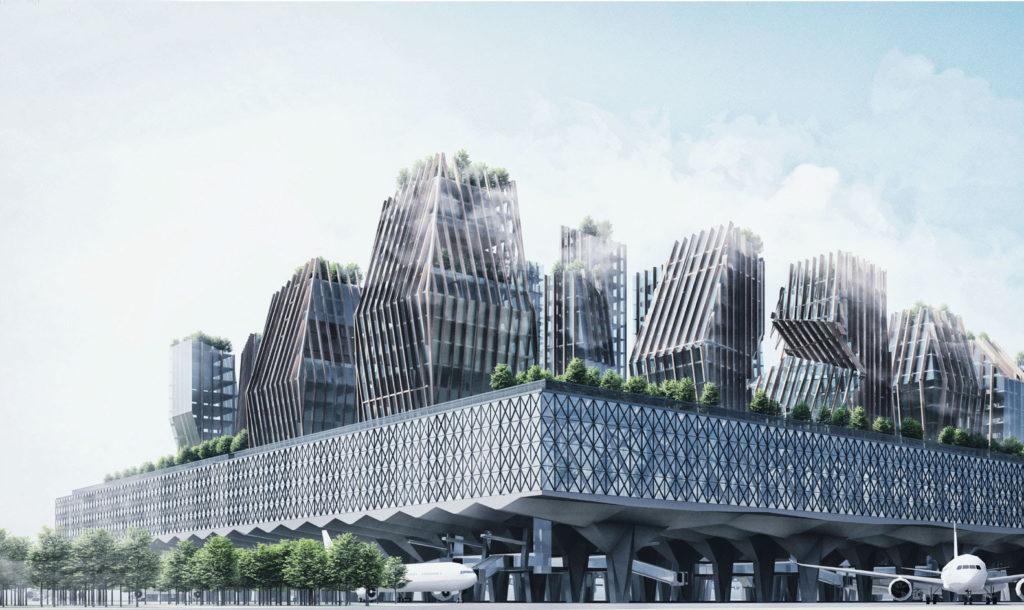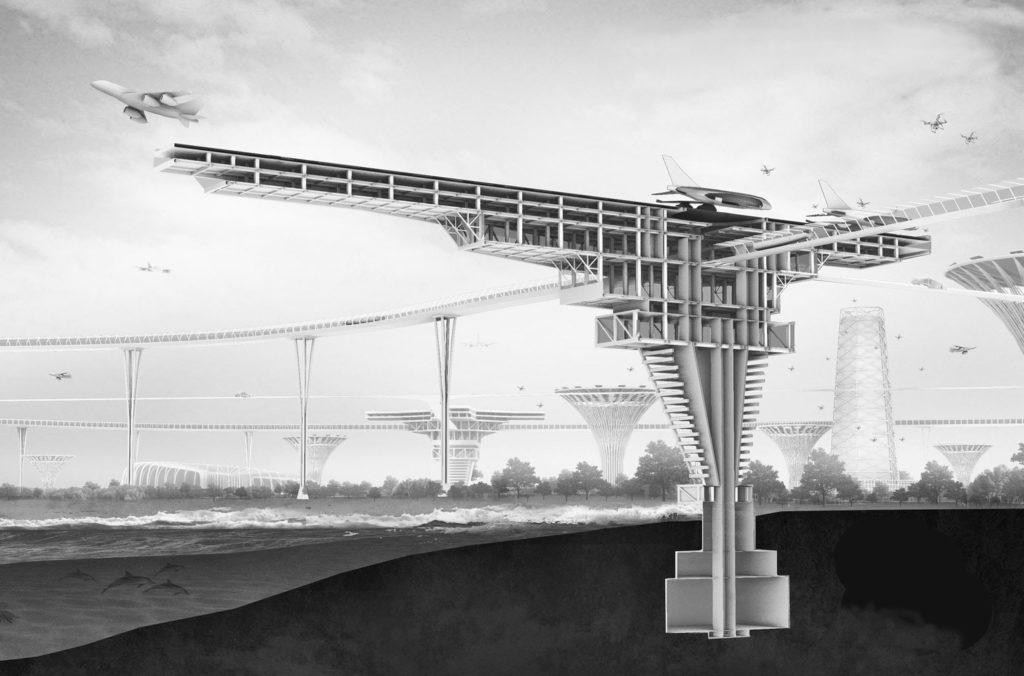Fentress Architects announced the winners of the 2019 Fentress Global Challenge, the international annual student competition. For this 7th edition, under the theme of envisioning the airport of the future in the year 2075, students from more than 50 countries participated in the contest, and more than 500 applications were registered.
"Each year the Fentress Global Challenge captures the creativity of young talent as contestants conceive innovative design ideas that create a better physical environment for our future world. The critical thinking and quality of ideas presented in this year’s competition were no exception; the entries were absolutely stunning,”
This challenge helps undergrads from all over the world to be recognized, as well as introduce their fresh and innovative ideas to the world. The problematic this year revolved around the improvement of the airport’s terminal building and the questioning of the future of aviation. The three winning proposals were selected based on 3 main criteria: their conceptual approach, their contextually oriented vision, and their bold design. In addition, this year, the people’s choice awards generated lots of attention to Fentress Architects’ Facebook page and gathered thousands of likes.
Find below the winning proposals.
1st Place – Infinity Airport
Daoru Wang, North Carolina State University, Raleigh, NC, USA

"To improve the efficiency of the airport typology, this project underwent an intensive study of aircraft traffic flow and further developed the concept of a ‘drive-through airport.’ Just as important as the internal operations, the connection to the existing urban fabric ensures that the design is not only efficient but also celebrated and utilized properly. Taking inspiration from the torus knot, which appears like two overlapping INFINITY symbols, the general shape of the airport combines the complexity of the form and the ideology of INFINITY by creating the circular and endless concourse system. At the same time, the double-loaded bar system has the capability to stream the loading/unloading process, which underlines the importance of the circulation of the aircraft within the airport and expands the limits of the typology of existing airport.”
Daoru Wang
2nd Place – Newark Airport Biophilic Headhouse and Community Nexus
Samantha Pires, New Jersey Institute of Technology, Newark, NJ, USA

“The project uses this rail access and a consolidated terminal to explore ideas defined by economic analyst John Kasarda, [author of] the Aerotropolis. The aerotropolis is a conceptual type of urban form, with the airport as the center of the metropolis. This project applies the concept of the aerotropolis and proposes that the Airport of the Future is one that brings economic development to the community that it serves. It proposes that the Airport of the Future should not be governed by fear and ‘security theater’ that runs modern airports, but that it should be a place for community engagement, job opportunities and a catalyst for neighborhood development and benefit.”
Samantha Pires
3rd Place – LondonHeathrow2075
Christopher Johnson, University for the Creative Arts, Farnham, UK

“A new airport concept typology explores future technological trends and smart cities to connect humanity directly to generate a new urban fabric within the existing airport landmass of Heathrow. A drive-through concept that sits below the airport terminal allows aircraft traffic and waiting times to be reduced. Technological innovations suggest a reduction in physical passports, security and immigration as it moves to an online environment. An international zone that lives within a country that provides free roam to visitors and guests creates a global destination that re-invests in the notion of the UK’s stance on the global market.”
Christopher Johnson
First People’s Choice Award – Y3M with 2,800+ Votes on Social Media
Chai Yi Yang and Ng Yi Ming, University of Malaya, Kuala Lumpur, Malaysia

“We envision the possibility of a synthetic amalgamation—the integration of an Elon Musk-like Hyperloop tube system and capsule fuselage technology. The great leap in technology advancement would manifest a subversive paradigm transformation towards current airport morphology, from a centralized mass into a vessel-like network. While refraining the inefficiency of turnaround, vast runways, long travel distance, huge labor force, convoluted programming and so on, the new model suggests a seamless transition from rail to flight—elementary yet expeditious. This gesture is denying the airport as an isolated system in the collective locomotion structure, bringing aviation closer to our regular transit as a unification where we expect a new civic role. This notion adopts the ideology of Hong Kong as a capital of movement and efficiency, being a creation of international identity. The other part of this concept advocates ecological concern to reserve a greater land compared to traditional typology.”
Chai Yi Yang and Ng Yi Ming
Second People’s Choice Award – Six Lane City with 2,500+ Votes on Social Media
Riki Rozenberg, Evelyn Kreslavsky, Mai Whiteson, Tel Aviv University, Tel Aviv, Israel

“Today, O'Hare International Airport in Chicago extends over 12 square miles, most of which are not fully exploited. Therefore, we decided to create a new form of the city, 650 feet above ground level, which will be built on top of the existing lanes or runways of the airfield. Our goal is to create an aerotropolis—an airport which integrates residential solutions, economic opportunities, and cultural experiences, which, we think, will bring people closer together.”
Riki Rozenberg, Evelyn Kreslavsky, and Mai Whiteson
This was originally posted on Archdaily by Christele Harrouk.



